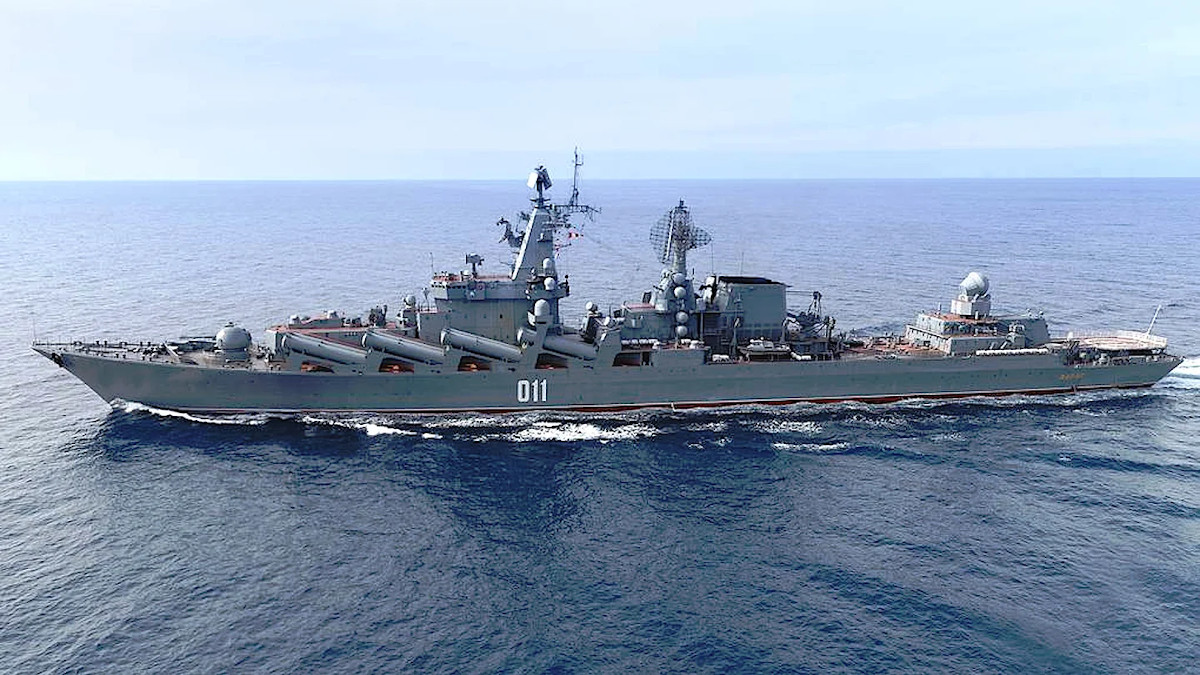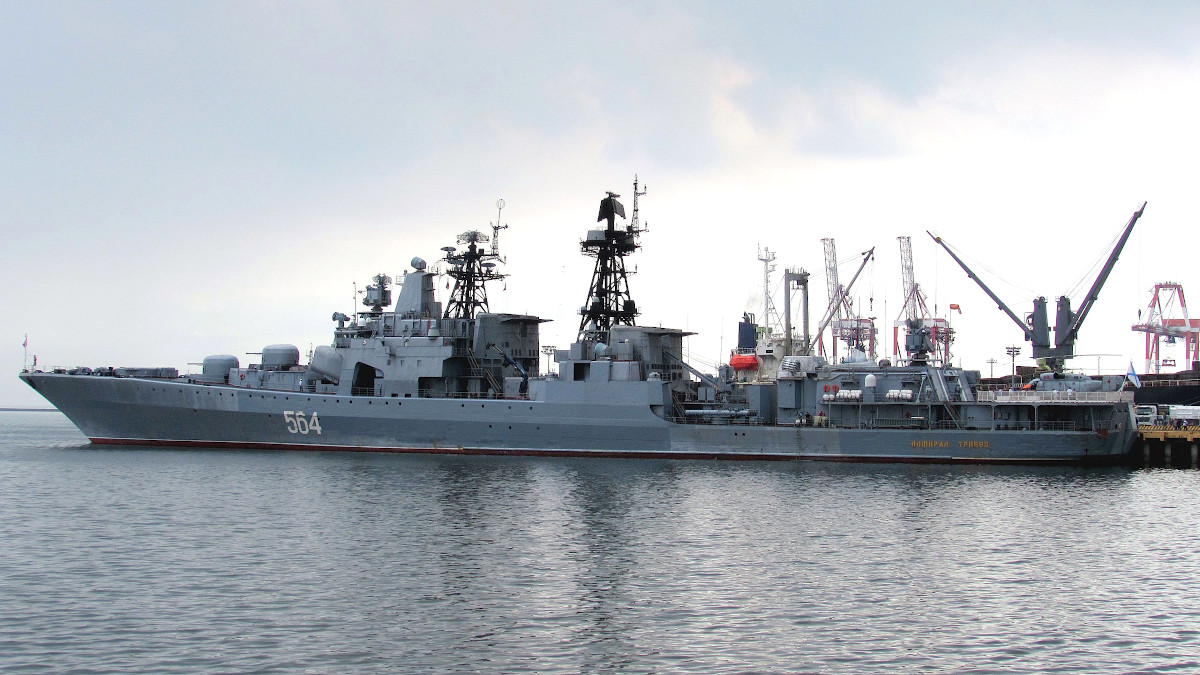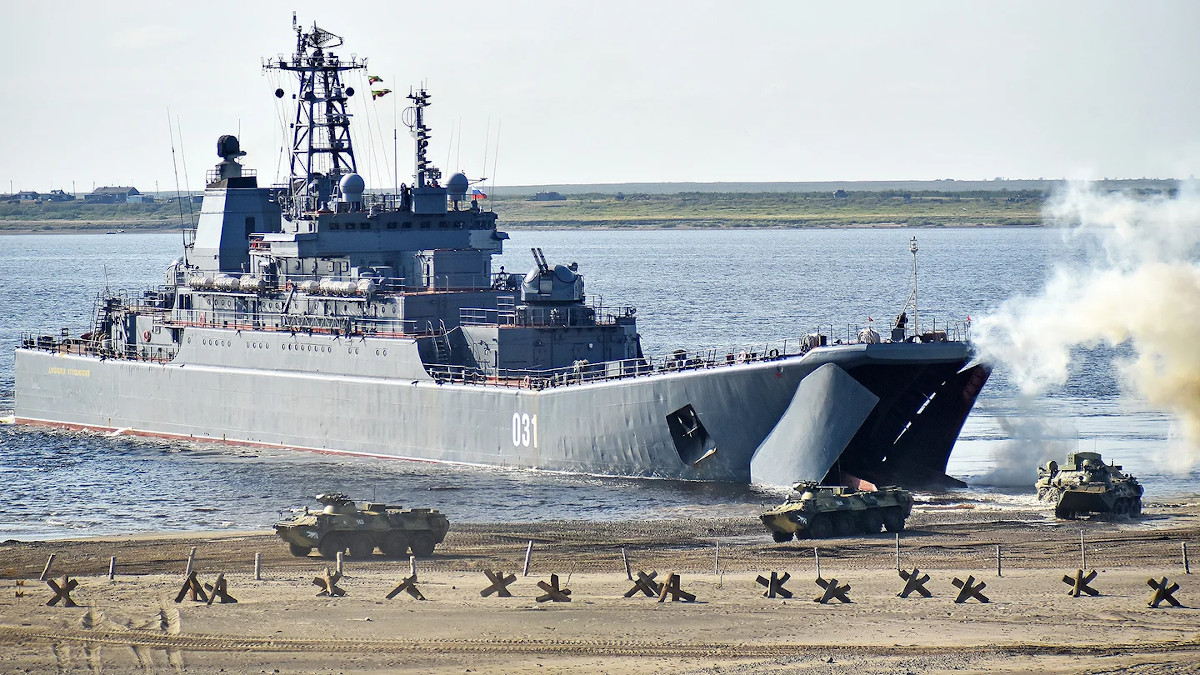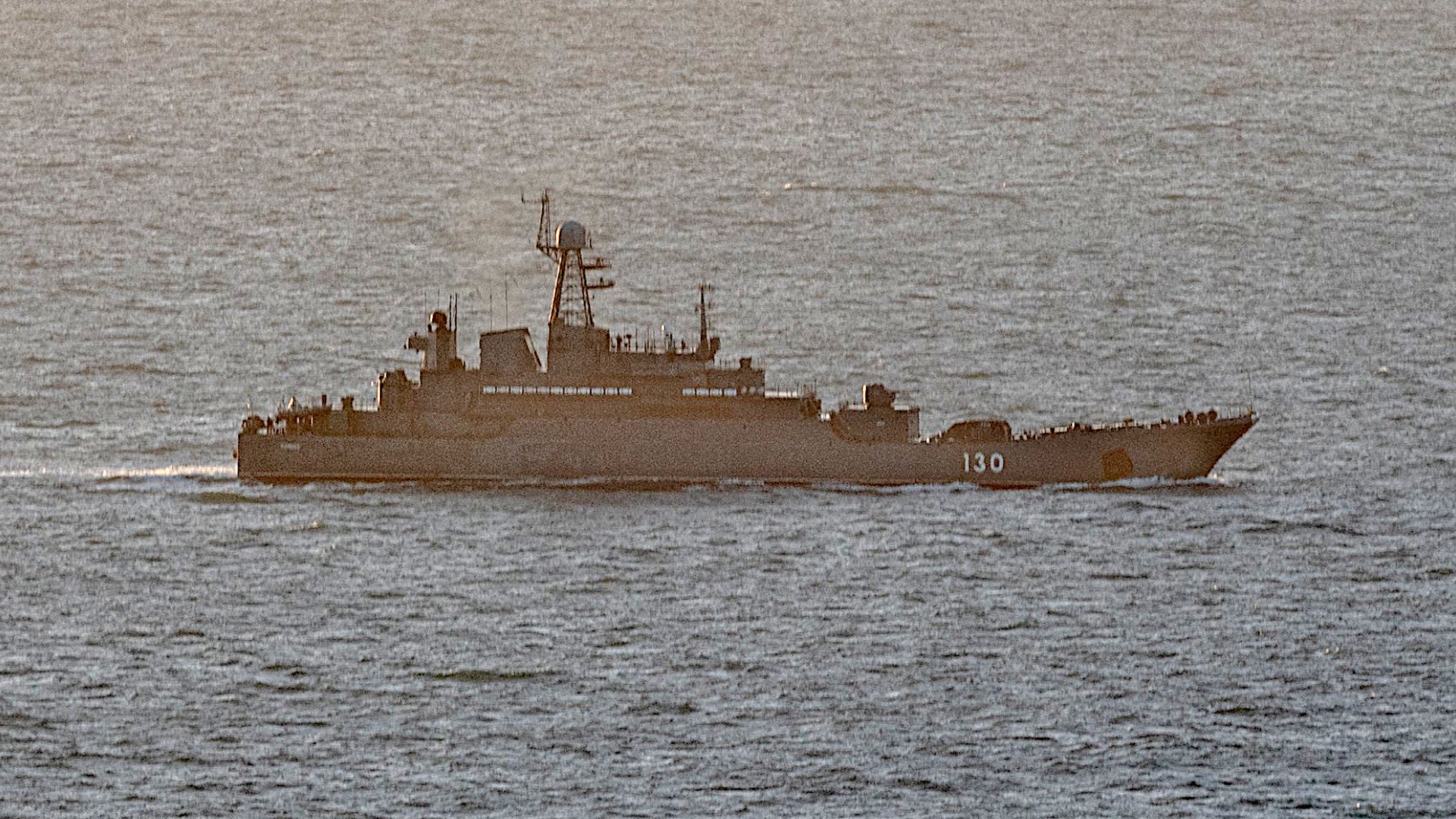The Russian Ministry of Defense has confirmed that six amphibious warfare ships that left the Baltic Sea this week are heading to the Mediterranean Sea, where they say these vessels will take part in naval exercises. From the Mediterranean, this amphibious flotilla could potentially swing north into the Black Sea. There has already been significant discussion among experts and observers about whether this might be the actual final destination of these ships, which would put them in a position to support a possible new large-scale Russian intervention into Ukraine.
Three Project 775 Ropucha class amphibious warfare ships from the Russian Navy’s Baltic Fleet were spotted leaving the region on Monday. Two more Ropuchas and a Project 11711
Ivan Gren class landing ship, all from the service’s Northern Fleet, followed after them the next day. The first three began transiting south through the English Channel on Wednesday, while the second trio reportedly just began moving toward the North Sea after being delayed by bad weather. Before yesterday, there had been no official word on where they were headed.
This new official announcement about the plans for these amphibious warfare vessels came in a press release yesterday regarding an unrelated Russian naval exercise with Chinese and Iranian forces in the Gulf of Oman, which is set to wrap up tomorrow. The Slava class cruiser
Varyag, Udaloy class destroyer
Admiral Tributs, and the fleet oiler Boris Butoma, all from the Russian Navy’s Pacific Fleet, are presently taking part in those drills, but will join the amphibious ships in the Mediterranean afterward, according to the press release. Varyag is the flagship of Russia’s Pacific Fleet.


Separately, a Russian Navy Vishnya class intelligence-gathering ship, the Vasiliy Tatishchev, was spotted passing through the Strait of Gibraltar into the Mediterranean yesterday. Where that vessel is headed is unclear, but it is certainly plausible that its appearance is related in some way to these other Russian naval movements.
Russia has said that the forthcoming naval drills in the Mediterranean will be part of a large series of maritime exercises around the world, including in the North Atlantic and Pacific regions, which will involve approximately 140 ships and 60 aircraft, in total. The drills are intended to “practice navy and air force action to protect Russian national interests in the world’s oceans and to counter military threats to the Russian Federation,” another Russian Ministry of Defense press release said.
The language the Russian ministry of defense used to describe these naval drills is similar in many respects to how the Kremlin has described the nature of large-scale exercises in Belarus that are scheduled to start next month. The massive deployments of troops and materiel, including Iskander short-range ballistic missiles and combat aircraft, associated with those drills have drawn concern from officials in Ukraine, as well as the United States and elsewhere. The fear is that this is all just a cover to get these forces into position for an impending new invasion of Ukraine.
“What concerns us is the total picture, right? … It [Russia] is the amassing of 100,000 troops along Ukraine’s borders combined with moving forces into Belarus over the weekend, it is – it is – these numbers are beyond, of course, what we would expect with regard to a normal exercise, right?” a senior U.S. State Department official told reporters during a background briefing earlier this week in reference to the forces massing in Belarus. “A normal exercise requires notification 42 days in advance if you’re talking about 9,000 troops, right? Normal – and 13,000 requires international observers. That’s what normal looks like. What this is is something entirely different.”
Ukrainian and U.S. officials have assessed for weeks now at least that any new major Russian military intervention into Ukraine is likely to be a multi-pronged operation that includes amphibious landings along the country’s southern coastlines, especially in the Sea of Azov just to the north of the Black Sea. Having six additional large landing ships, able to carry mixtures of tanks and other armored vehicles, troops, and equipment, in the region would be extremely useful for supporting those operations. It’s unclear whether or not they’re bringing additional personnel and materiel from the Baltic with them now. The Varyag, Admiral Tributs, Vasiliy Tatishchev, could help further bolster the Russian Navy’s capabilities, adding to the warships and submarines that are already assigned to its Black Sea Fleet.

It is important to note that there is still no firm evidence that the amphibious warfare ships heading toward the Mediterranean, or any other Russian naval vessels that are also on their way or are in the region now, will ultimately end up in the Black Sea. At the same time, the Russians have made such deployments during periods of heightened tensions in the past. Last April, when there were also fears that the Kremlin might be about to launch a new invasion of Ukraine, the country’s Navy also sent a number of vessels, including Ropucha class landing ships, to the region ostensibly for exercises.
Actual exercises in the Mediterranean, especially in the eastern part of the sea, could draw the attention of Russia’s opponents and distract them from preparations to invade Ukraine, too. It’s unlikely that Russia would attempt to use these ships to try to block access in and out of the Black Sea, which would almost certainly provoke a major international incident, but other countries would have to factor in the presence of its naval vessels, and the potential risks they might pose, into their own planning processes.
The U.S. military and others will certainly keep close tabs on these Russian naval movements as they move into the Mediterranean on their way to whatever their final destination might be. The U.S. Navy’s Nimitz class carrier USS Harry S. Truman and its associated strike group are currently in the region, as well, specifically to help reassure allies and partners amid this latest geopolitical friction with Russia.
Earlier this week, the Navy also made the unusual decision to publicize the presence of the Ohio class guided-missile submarine USS Georgia in the Eastern Mediterranean. The service has in the past disclosed the use of these submarines, specifically, to keep tabs on Russian activity in the region. There are only four Ohio class guided missiles submarines, or SSGNs, in service and they are highly specialized platforms with extensive intelligence-gathering capabilities, as well as being able to carry as many as 154 Tomahawk cruise missiles, among other capabilities, that you can read more about here.
The U.S. Air Force and Army have already been carrying out aerial ISR missions in the Black Sea region, as well as over Ukraine proper and along Belarus’ western borders, on a near-daily basis for weeks.
There is also the potential that if any large number of Russian ships do eventually move into the Black Sea they might find it more congested than normal. Spain, a NATO member, announced yesterday that it would send a destroyer and mine-sweeper to the region specifically in response to the situation in and around Ukraine. That country’s Air Force might also deploy fighter jets to Bulgaria. This follows the announcement this week of new Danish naval and air deployments to the Baltic Sea region. Other members of the Alliance are considering their own military deployments to the Black Sea and Baltic Sea regions, as well.
There is, of course, no indication that NATO, or any of its individual members, are planning to deploy forces to Ukraine to fight against any new Russian incursion or that these countries have any other plans to engage Russia directly on a military level. The clear hope is that these kinds of deployments will contribute to a larger set of deterrents to dissuade Russia from launching a new military operation in Ukraine. The Kremlin regularly criticizes these kinds of deployments as threatening its interests. Just today, Russia’s Foreign Ministry reiterated a demand for all foreign NATO troops to leave Bulgaria, as well as Romania, among other member states that joined the alliance after 1997.
Whatever Russia does or doesn’t decide to do very much remains to be seen. However, these naval deployments to the Mediterranean, and potentially into the Black Sea, only add to the mountain of worrisome signs that the Kremlin might be right about to kick off a new invasion of Ukraine.
Update 3:10 PM EST:
The Pentagon has announced that the Truman Carrier Strike Group will be the centerpiece at a NATO naval exercise called Neptune Strike 22 that will begin soon and run through February 4th. The Truman will be placed under NATO operational command during Neptune Strike 22. The planning for this exercise goes back to 2020, but it is hard to see how it cannot take on additional significance now given tensions with Russia.
“It’s designed to demonstrate NATO’s ability to integrate the high-end maritime strike capabilities of an aircraft carrier strike group to support the deterrence and defense of the alliance,” Pentagon Press Secretary John Kirby said during a press conference today. “The strike group along with several other NATO allies will participate in coordinated maritime maneuvers, anti-submarine warfare training, and long-range strike training.”
Authorities in France had announced yesterday that the French Navy’s aircraft carrier Charles de Gaulle would conduct exercises together with the Truman and its strike group, as well as the Italian carrier Cavour in February. It’s unclear if these drills will be part of Neptune Strike 22 or will be separate from that exercise.
Contact the author: joe@thedrive.com
